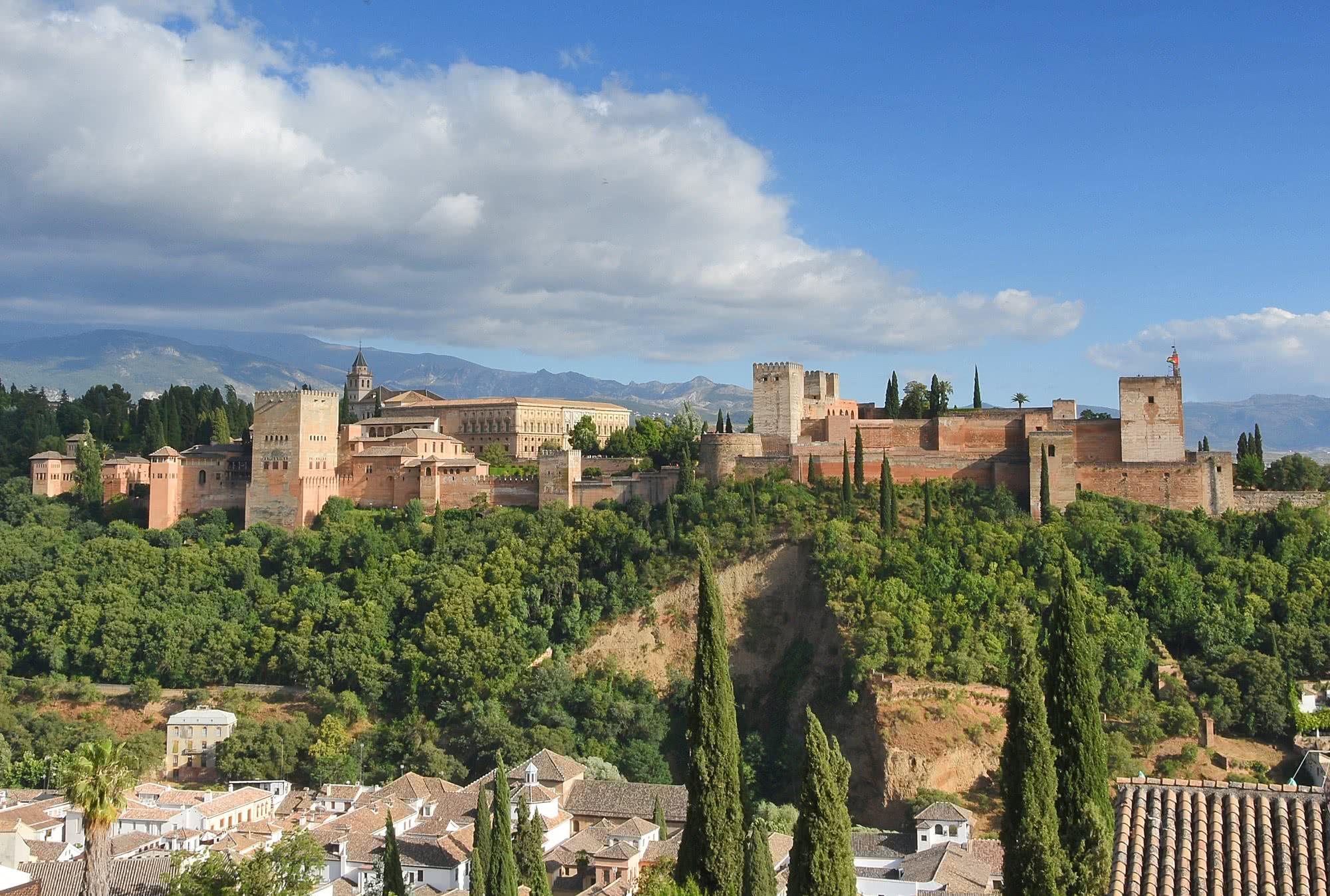



Alhambra: A Tapestry of Tourism, Art, and History
The Alhambra, an enchanting Andalusian palace complex in Granada, derives its name from the Arabic term "Alhambra," meaning the Red Citadel, perhaps inspired by the rosy hues of its surrounding walls.

Tourism: This magnificent complex is a testament to Islamic architecture's splendor, drawing tourists to its intricate designs, lush gardens, and panoramic views of Granada. The Nasrid Palaces, with their delicate stucco work and courtyards, are highlights, as is the Generalife Gardens, offering a tranquil retreat.

Art: The Alhambra is an artistic marvel, showcasing the brilliance of Moorish art and architecture. The intricate geometric patterns, arabesques, and inscriptions on the walls reflect a rich artistic heritage. The Court of the Lions, an iconic symbol, exemplifies this artistic prowess.

History: Founded in 1238 by Muhammad ibn Nasr, also known as Alhamar, the Alhambra served as the seat of the Nasrid Dynasty. It was a self-sustained walled city with mosques, schools, and workshops. The Alhambra played a pivotal role in the cultural and historical narrative of Andalusia.

The Alhambra, with its blend of tourism, art, and history, stands as a captivating testament to the cultural fusion that defined medieval Andalusia.
Alhambra
Address: Calle Real de la Alhambra, s/n, 18009
Phone: 958 027 971
Site:
http://www.alhambra-patronato.es/Location inserted by
BBCC